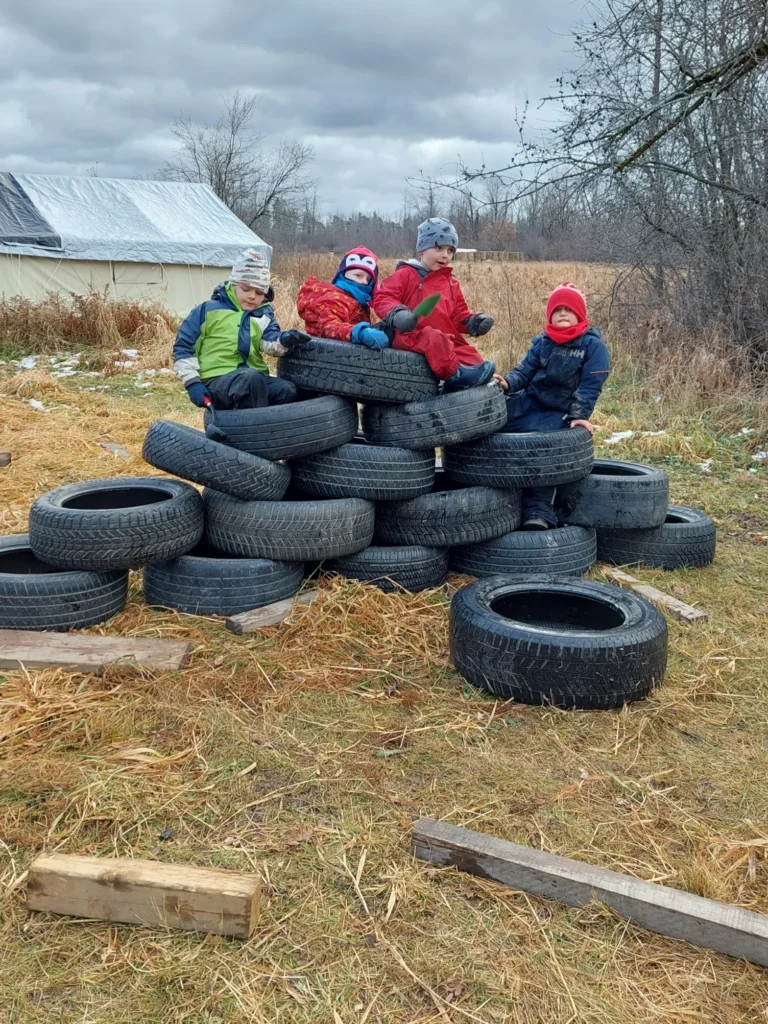We know that loose parts support children in open-ended imaginative play and connection with one another. When one thinks of forest school, it’s easy to envision a pleasantly weathered mud kitchen, or a pile of wicker baskets warming in the sun, waiting to be filled with acorns and joy. But what about those loose parts that are more visually jarring, that don’t quite blend in with the aesthetics of their background? Imagine if you will turning a corner in the forest and entering a field of waving grasses and wildflowers. Maybe there is a pale canvas tent or two, a wood-panelled greenhouse, but in that moment perhaps your eyes are drawn to—is that an enormous pile of tires?? What is that doing in the middle of this idyllic playspace?
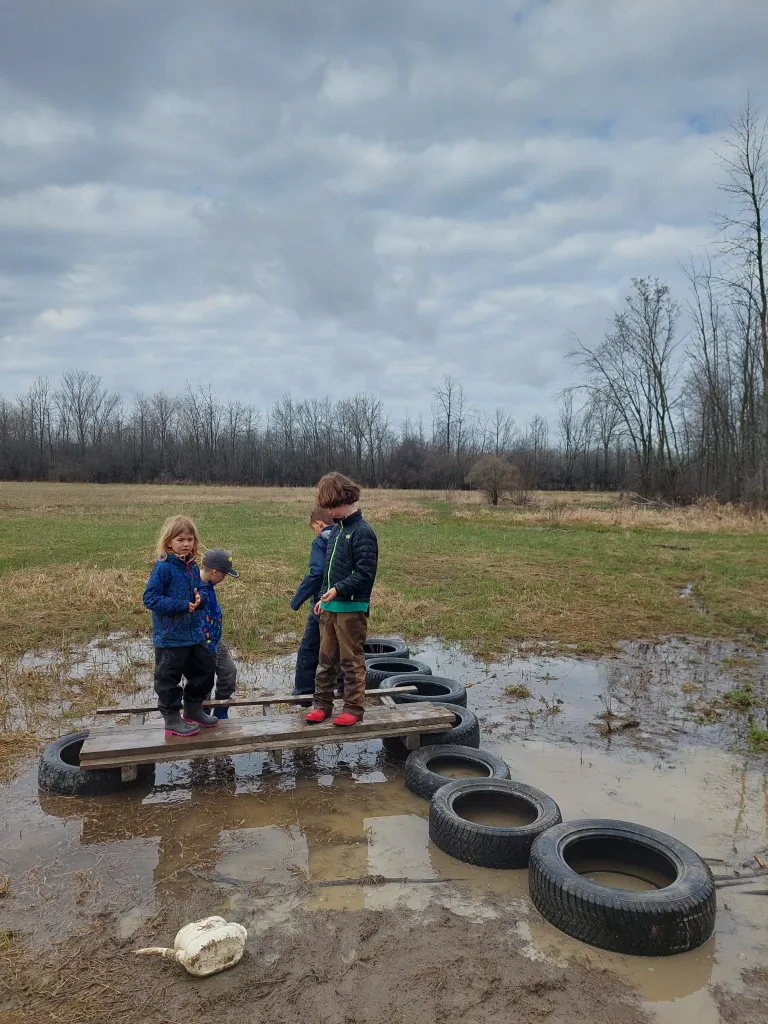
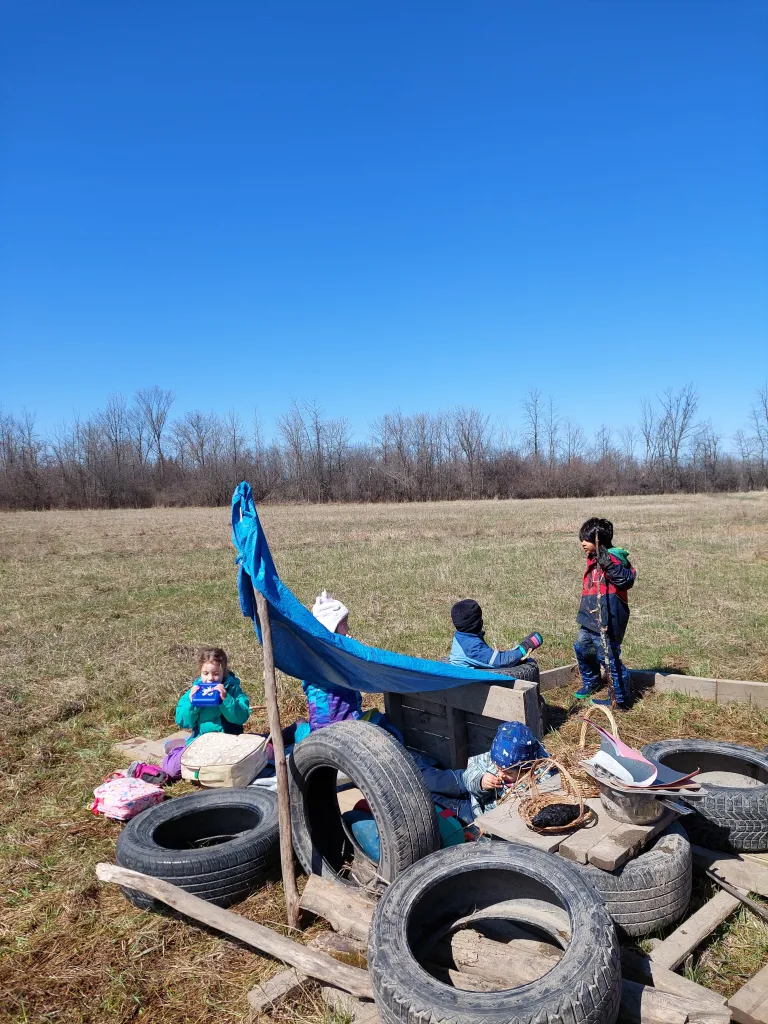

The population of tires in the field has been steadily growing since Out to Play opened: at each tent site, there are 10-15 regular tires, and we currently have an enormous (tractor?) tire that migrates around the field. Alongside the tires there are large pieces of lumber—pallets, and boards of varying lengths, as well as large wooden spools, some sturdy tables, and long pieces of trees that have fallen around the site and been cut into (more) manageable lengths. These are our big loose parts, sometimes referred to collectively as “The Junkyard.”
Choosing to include these big loose parts in our program is to assume a heightened sense of risk, which necessarily requires more active engagement from the educators. We need to be close by and dynamically assessing the situation for moments when we need to intervene to mitigate a safety risk. For example, “I see you wanting to move that big board! Remember how we give sticks space at forest school? Let’s also give space to this piece of wood!” Or, “You look ready to add another tire to that pile. It feels safer if the stack is lower than your head, so let’s keep it to three tires high, but would you like to use that tire to build a step on the side?”
And we are so happy to incorporate this added dynamic risk assessment into our moments, and to support this kind of BIG play, because we see such unique value in it!
First, there are values inherent to the physical challenges involved in playing with big loose parts. All students benefit from the sensory effects of heavy work—pushing and pulling and really using their strength to accomplish a task.
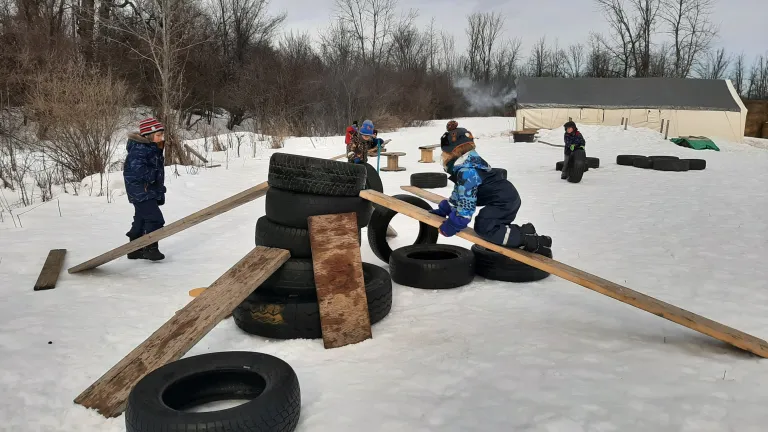
Then there are the opportunities for social learning: frequently the boards and tires are too large or cumbersome to be moved by a single child, and so partnerships have to be formed. There has to be communication between all the students using the space, to ensure that pieces can be moved safely, and that everyone has (functionally) a shared understanding of how the space will be used. Whenever there is a limited resource, there can be a tension where children are worried that their ability to have fun might be threatened if someone else’s fun in that space looks different. As educators we can step in to validate that the same stack of boards and tires can be used simultaneously in slightly different ways. “I hear that you are calling this a ship, but that friend needs a place to live. Could they perhaps join you in living at sea?”
Big loose parts also allow our students to show us what they are capable of. We frequently set up the loose parts in the morning in a manner that we think will be enticing or inspiring to the group that day. Sometimes the students arrive and jump into what we created, maybe adding onto it. Other times they immediately dismantle our set-up and create something that none of us adults could have dreamed up ourselves.
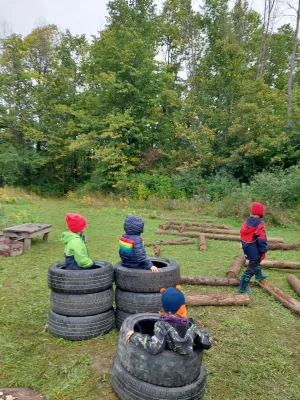

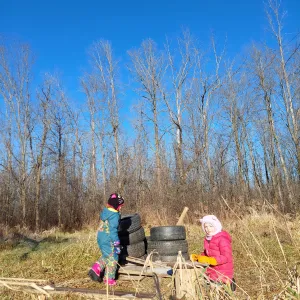
A multi-week long project that began with one such dismantling was called The Castle. A student arrived one Tuesday with a clear idea of what he wanted to build in his head. It needed tires, and tables, and symmetry. And it was going to have a drawbridge. As more students arrived, they were warmly welcomed into the project, which by design supported multiple entry points for our mixed age grouping. (The castle emerged in a group of 16 students whose ages spanned 4 to 10 years old). So many different kinds of play and work took place within this one ongoing structure/society. There was a constant honing of the physics and maintenance of the castle and the drawbridge. There was a visitor’s log. There was trade with students creating in the mud kitchen nearby. And there was consistently an art studio operating out of the back room.
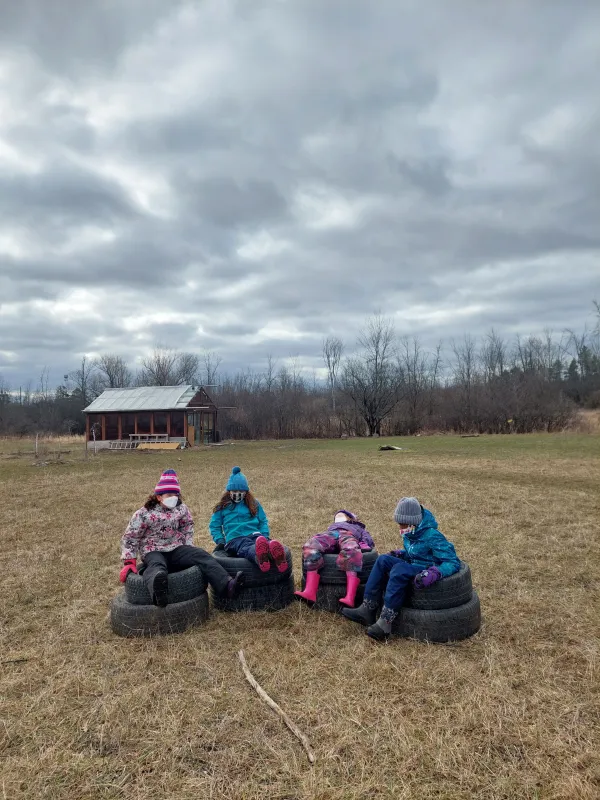
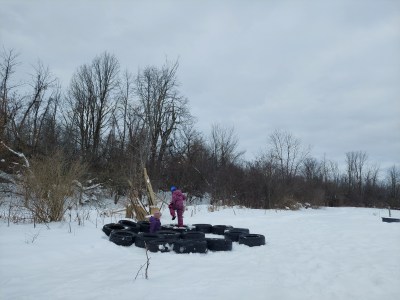
We have also witnessed the construction of so many different slides through the seasons, producing consistent giggles if not consistent results. There have been additions built onto the mud kitchen that allow it to operate commercially and serve more customers. There has been challenge and cooperation and creativity, and at the end of each day, the children help us stack the boards and tires somewhat tidily before gathering for their closing circle.
In incorporating these big loose parts into our everyday rhythms, we as educators are actively choosing to trust that tires and boards are tools through which incredible learning can happen. We are actively trusting our students to make ongoing safe choices for everyone’s bodies. We are trusting ourselves and our co-educators to assess what is unfolding and to communicate about the ways in which our support or scaffolding is required.
And with this trust, and these loose parts, and this incredible field, our students are able to create things that are absolutely magical…even if the results don’t always blend in with the pastoral backdrop.


